DELAUNAY ROULETTE

| next curve | previous curve | 2D curves | 3D curves | surfaces | fractals | polyhedra |
DELAUNAY ROULETTE

| Curve studied by Delaunay, 1841; Lindelöf, 1861.
Charles-Eugène Delaunay (1816 - 1872): French astronomer. Other names: elliptic, parabolic, hyperbolic catenary. |
|
Differential equation: with e = 1 for the elliptic
roulette (ellipse with semi-axes a and b (a > b)),
Length on a period: |
The Delaunay roulette
is the locus of one of the foci of a conic rolling without slipping on
a line. It is elliptic, parabolic, or hyperbolic,
depending on whether the conic is an ellipse,
a parabola, or a hyperbola.
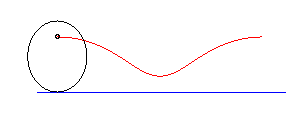 |
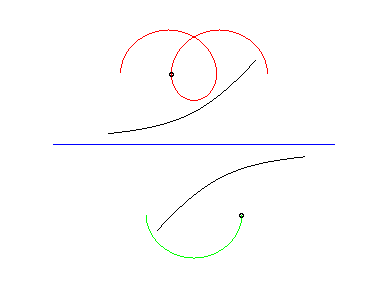 |
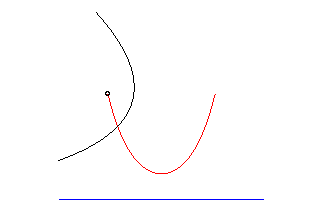
The parabolic roulette of Delaunay is none other than the catenary. |
With Ox as the rolling axis, the Delaunay roulette
is a curve oscillating between the lines
and
. The
line y = b is where can be found: in the elliptic case, inflection
points with a slope equal to
;
and points with vertical tangent in the hyperbolic case. The period of
y as a function of x is given by the elliptic integral l(2p);
it is the length of the ellipse in the elliptic case.
The following ingenious articulated mechanism can trace
Delaunay roulettes:
|
|
|
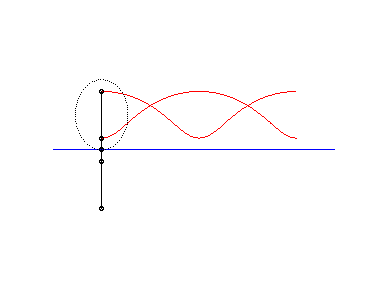 |
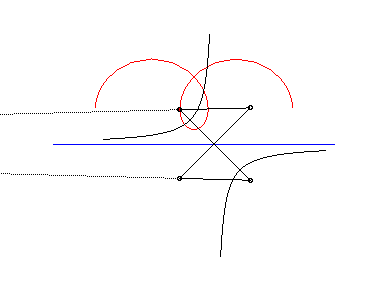 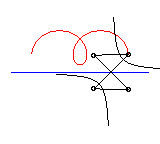 |
| This animation shows that, in the parabolic case, the directrix of the parabola envelopes the symmetric catenary about the rolling axis. This directrix cuts the rolling line at the same point than the tangent to the roulette at the corresponding point. | 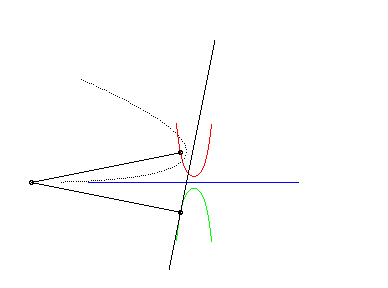 |
These curves were considered by Delaunay because of their property of being the only meridians of the surfaces of revolution with constant mean curvature, which are the Delaunay surfaces.
See also the Sturm roulettes, locus of the centre of the conic, as well as the determination of the road associated to an elliptic wheel.
Link: www.gang.umass.edu/gallery/cmc/cmcgallery0101.html
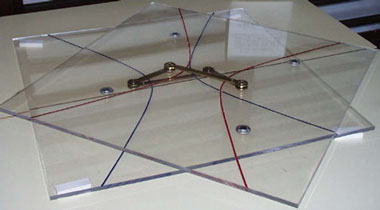
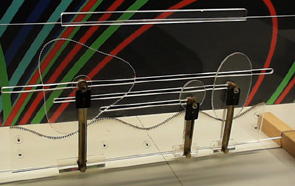
| next curve | previous curve | 2D curves | 3D curves | surfaces | fractals | polyhedra |
© Robert FERRÉOL 2017